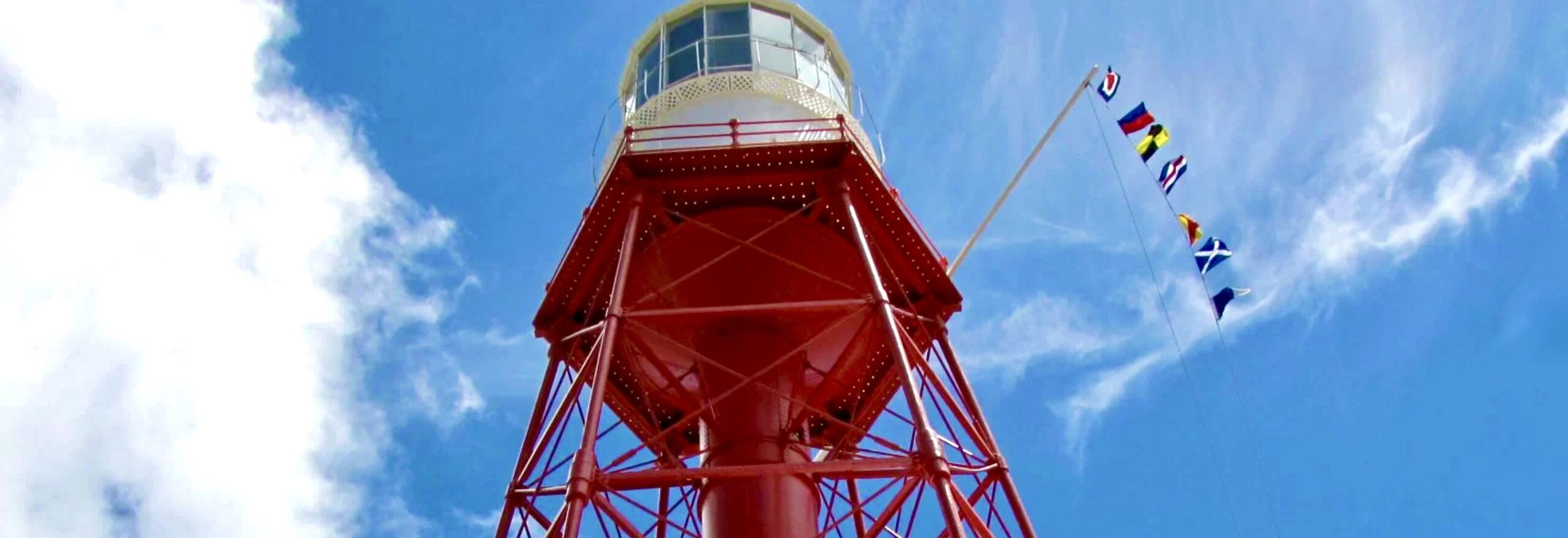
Cape Jaffa Lighthouse stands as one of Australia’s most remarkable offshore engineering achievements, originally constructed 8 kilometres out to sea on the treacherous Margaret Brock Reef. Designed by George Wells and built using components manufactured by Chance Brothers in Smethwick, England, the lighthouse took three years to construct and opened on 6 January 1872.
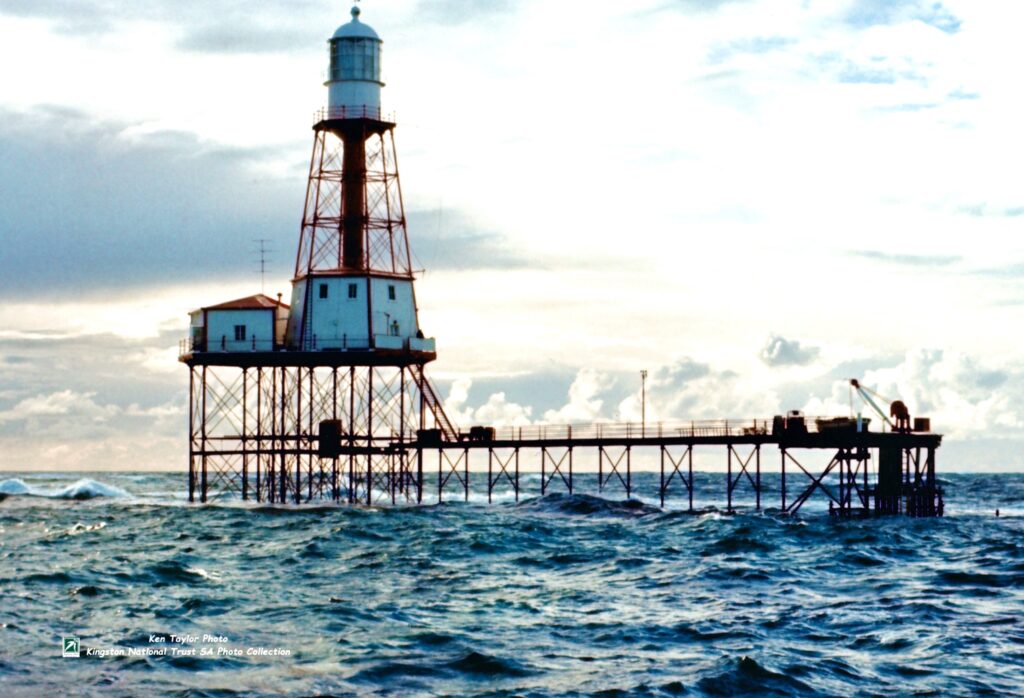
The structure employed the innovative “Wells Screw Pile” design, standing 41 metres high and held secure by being literally screwed into the reef’s rocks. This engineering marvel was specifically designed to withstand the extreme marine conditions of the Southern Ocean, representing cutting-edge Victorian maritime construction technology.
The urgent need for this lighthouse arose from the area’s deadly maritime history. The SS Admella shipwreck was specifically cited as the reason for commissioning the lighthouse, though the treacherous currents had seen the demise of many ships in the area. The Margaret Brock Reef itself was named after another vessel that met its fate on these dangerous waters.
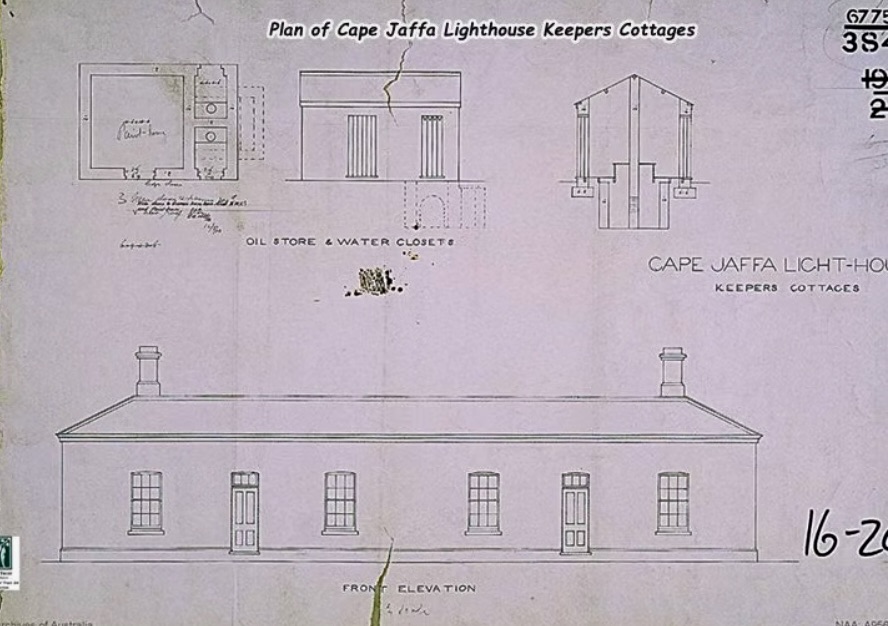
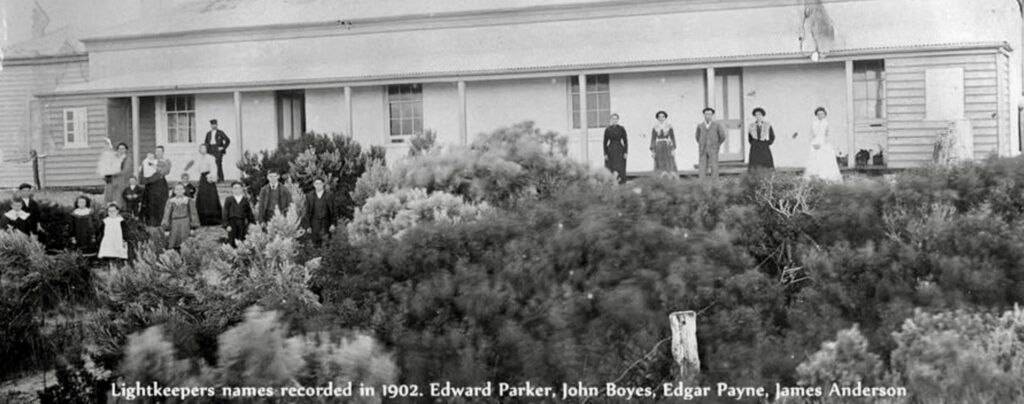
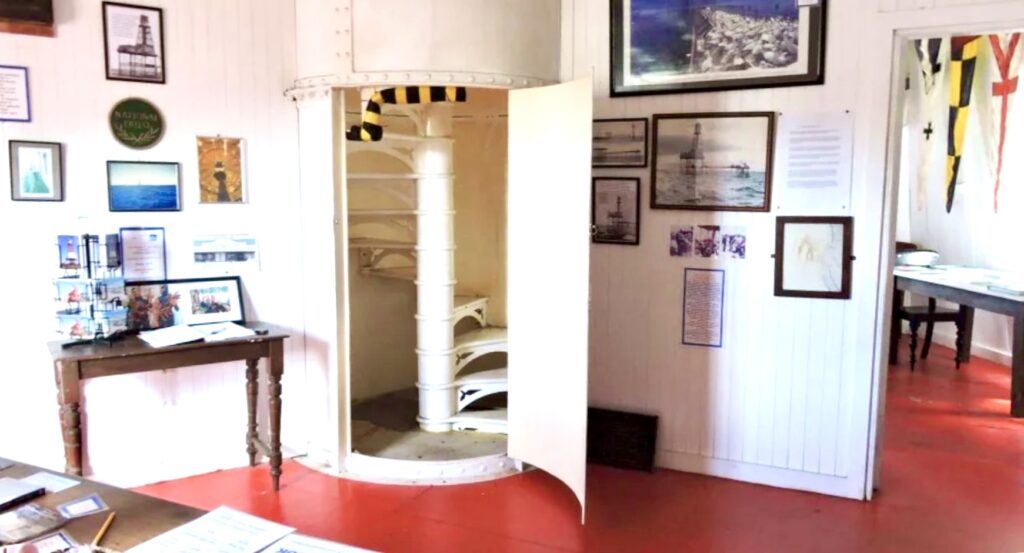
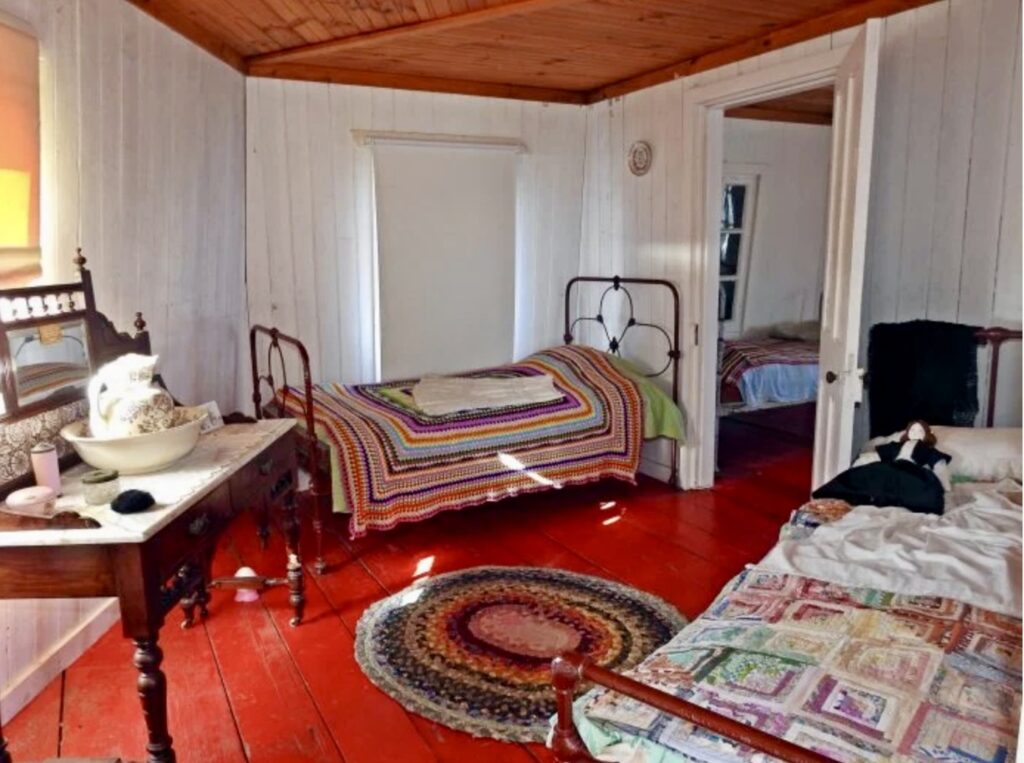
The lighthouse’s 8-roomed dwelling accommodated two lighthouse keepers and their families with enough stores to last several weeks. Life for keeper families on this isolated offshore platform presented extraordinary challenges, requiring complete self-sufficiency while maintaining one of Australia’s most critical navigation aids. Charles Henry West served as a lighthouse keeper during 1893-1919, having previously worked at other South Australian lighthouses and as a customs officer at Port Adelaide.
The lighthouse’s optical system evolved with technology. The original Chance Brothers lantern could be seen for up to 40 kilometres, while the original multi-wick oil burner was replaced by a pressurised kerosene burner in 1909. This lighting apparatus was turned off in 1973 and is believed to have been the last of its type to operate in Australia.
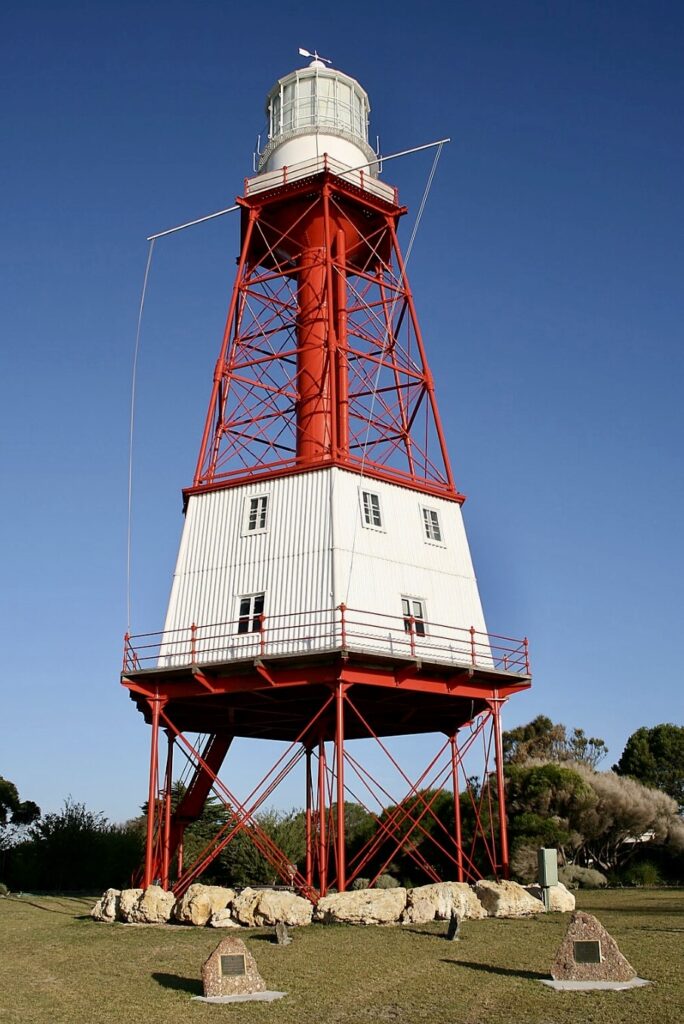
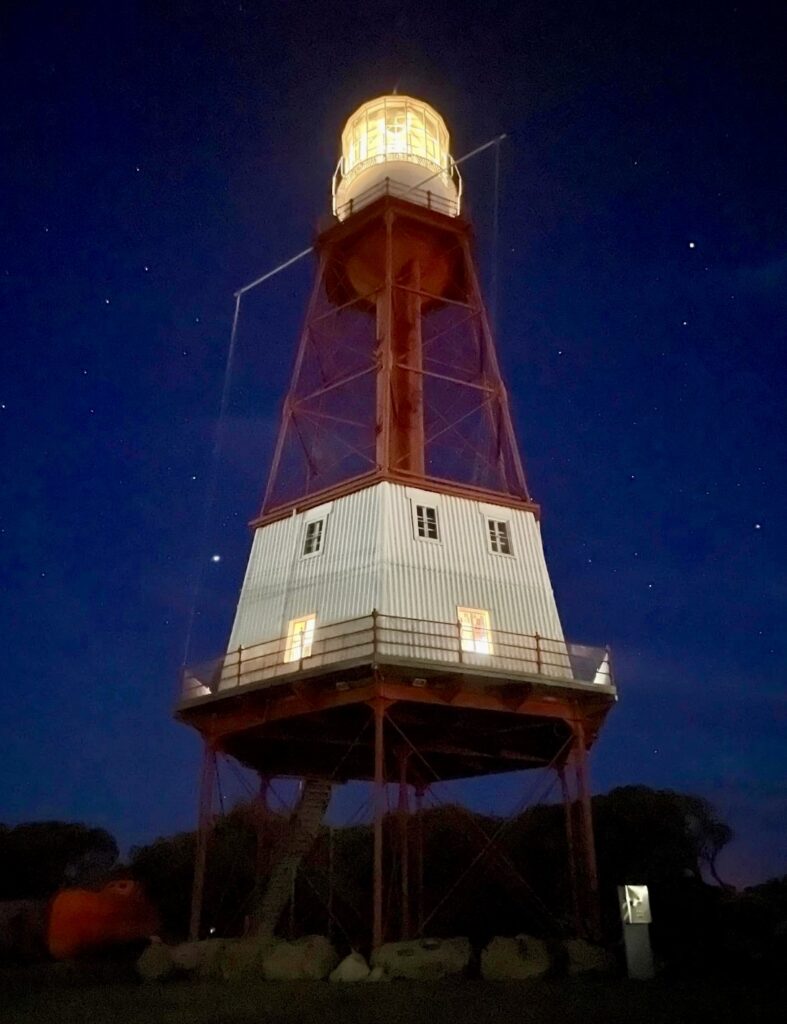
In 1973, the Federal Government decommissioned the light station and gifted the lighthouse to the National Trust. History was made in 1974 when the Cape Jaffa Lighthouse was dismantled and moved to Marine Parade Kingston. This extraordinary relocation preserved the structure as a museum, where it now houses the Margaret Brock shipwreck exhibition and rare, original lighthouse artifacts.
The lighthouse’s legacy reflects both the engineering boldness required for offshore construction and the human cost of maintaining maritime safety in one of Australia’s most dangerous waters. Today, visitors can explore this remarkable structure and learn about the keepers who risked everything to guide ships safely past the reef that claimed so many vessels before the light’s protective beam began its century-long vigil over these treacherous waters.
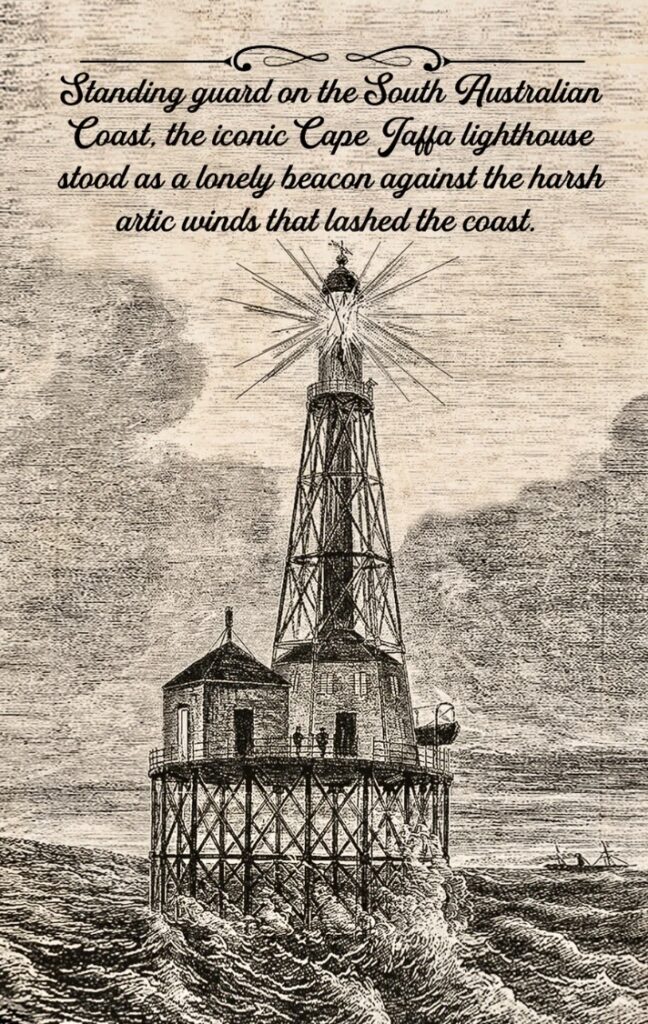
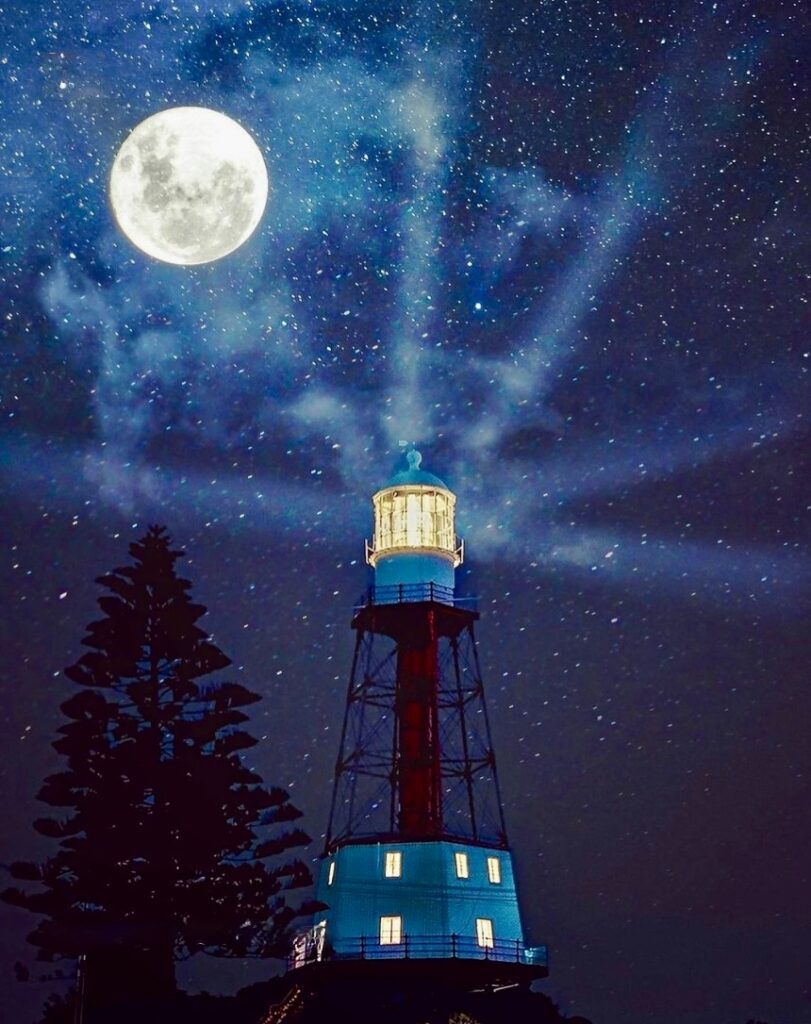
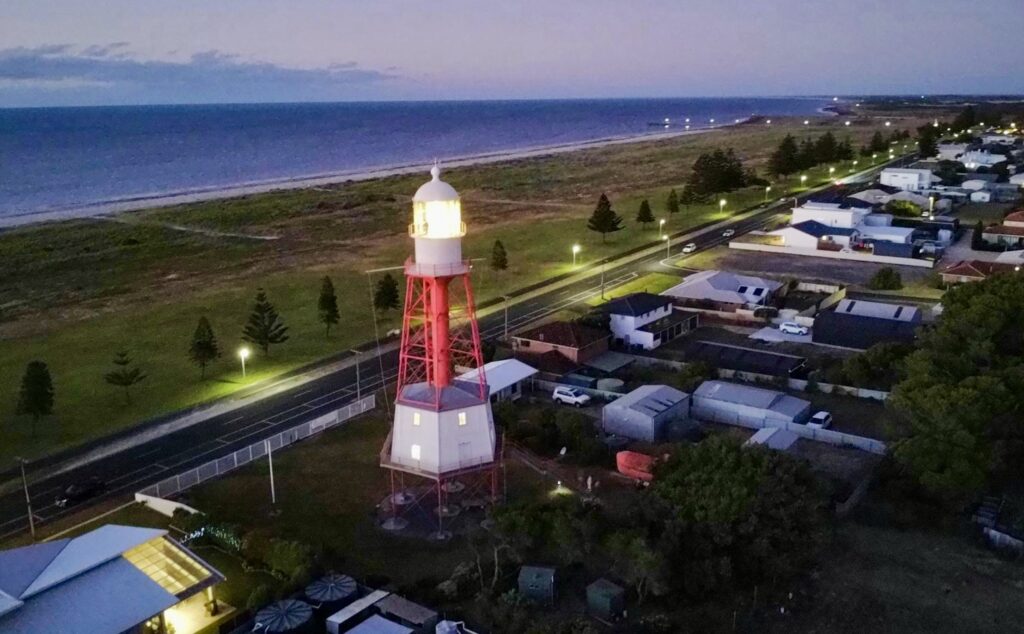
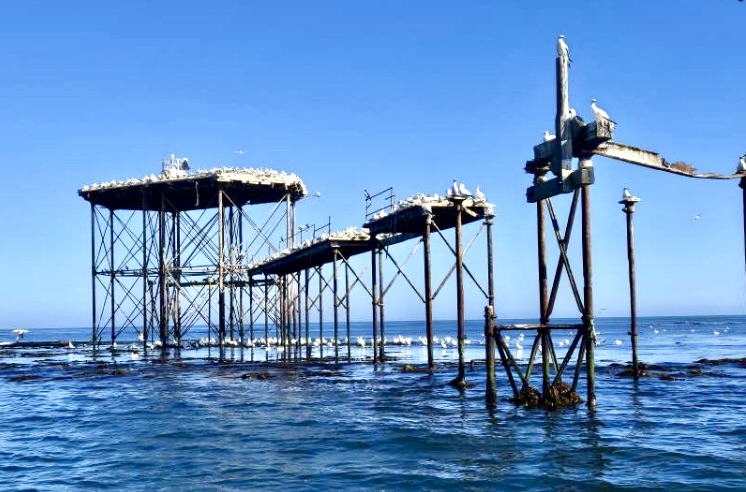
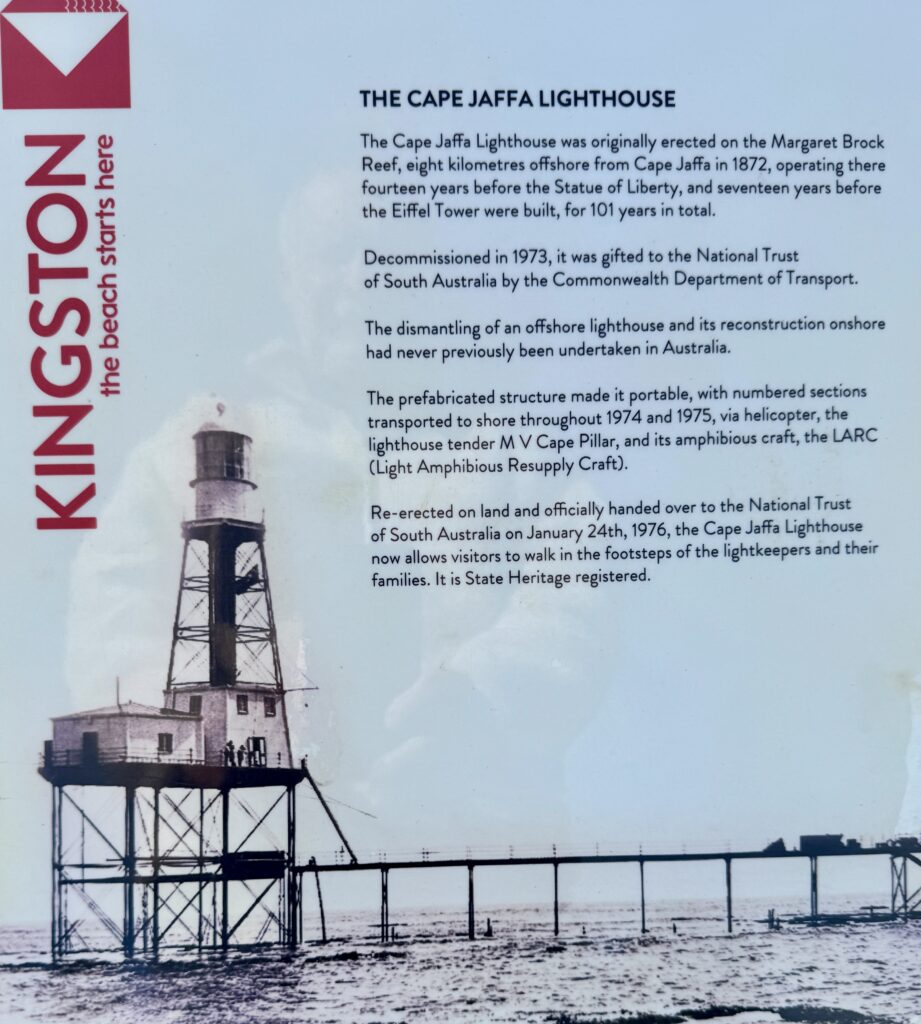
Technical Specifications – Cape Jaffa Lighthouse
First Exhibited: 6 January 1872
Status: Decommissioned 1973, relocated to Kingston 1974
Original Location: Margaret Brock Reef, 8 kilometres offshore from Cape Jaffa, South Australia
Current Location: Marine Parade, Kingston SE, South Australia
Construction: 1869-1872, designed by George Wells, manufactured by Chance Brothers, Smethwick, England
Tower Height: 41 metres
Construction Type: Wells Screw Pile design – iron framework screwed into reef rock
Accommodation: 8-room dwelling for two keeper families
Original Optic: Chance Brothers lantern system
Original Light Source: Multi-wick oil burner (replaced 1909 with pressurised kerosene burner)
Range: Up to 40 kilometres visibility
Decommissioned: 1973 (replaced by Robe Lighthouse)
Current Operator: National Trust (museum)
Notable Features: One of Australia’s most challenging offshore lighthouse constructions; last pressurised kerosene burner system to operate in Australia; completely relocated and preserved as museum; housed exhibition on Margaret Brock shipwreck and maritime artifacts
Disclaimer: Due to the need to get across the “Top End” in the dry season (which usually ends in October), and to spend time in the outback on the way north I have rushed the first stage of Act 3. In order to document the lighthouses I’ve visited I’ve enlisted the help of Elon Grok and A.I. Claude to help on these Lighthouse Stories. Despite their claims of infallibility I’ve found some of their facts not to be accurate and would welcome any corrections, which they will learn from! I have also sourced a number of photos from the public domain (i.e. Dr Google) to compliment the shots I’ve taken on my travels. I would like to concentrate on telling my personal experiences and thoughts as I travel around and intend to reedit these lighthouse stories when I have time.